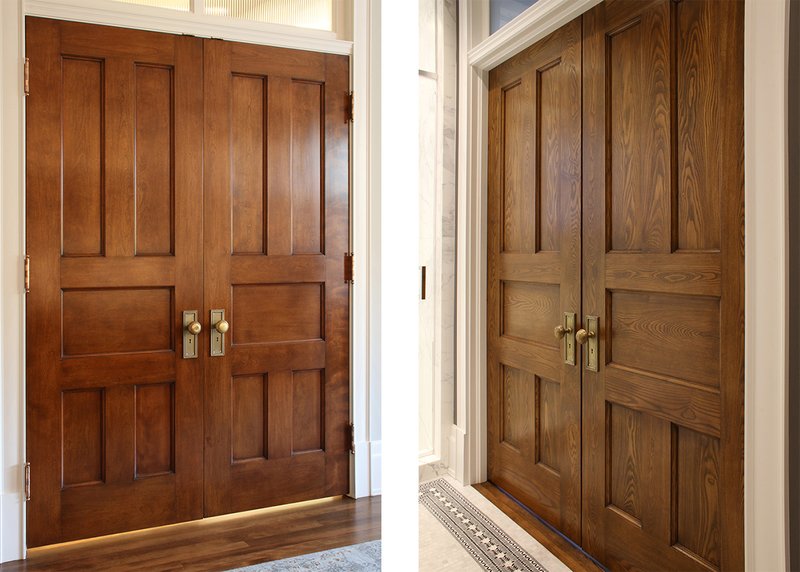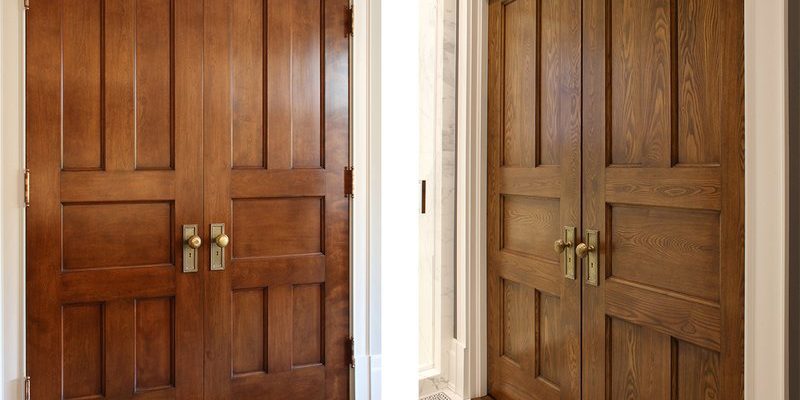
Here’s the thing: while modern hardware might be convenient, it often lacks the craftsmanship and aesthetic appeal that defines historic homes. You might be wondering how to find pieces that not only fit but also blend seamlessly with the existing style. Let’s delve into the best hardware options for interior doors in historic homes, focusing on replication methods that honor the past.
Understanding the Importance of Authenticity
When working with historic homes, authenticity is key. Using hardware that matches the original design ensures that you maintain the home’s architectural integrity. Think of it like putting on a vintage dress—it’s not just about the style; it’s about how the piece fits into the overall vibe of the era.
In many cases, original hardware may be damaged or missing. Luckily, there are companies that specialize in replicating period-appropriate hardware. They use materials and techniques that mimic those of the time, taking into consideration the wear-and-tear that has occurred over the years. This approach not only preserves the home’s aesthetics but also adds to its historical value.
Choosing authentic-looking hardware does more than just support the look of your home. It tells a story. Each piece you install contributes to the narrative of the home, preserving its history for future generations.
Types of Door Hardware for Historic Homes
When selecting hardware, you’ll come across several types, each with its own flair. Here are some of the most common types of door hardware seen in historic homes:
- Knobs: Traditional door knobs often feature ornate designs. Materials can vary from brass to crystal.
- Handles: Some homes may use handles instead of knobs, especially in pantry or utility doors.
- Backplates: These accompany knobs or handles, adding an extra layer of detail, and come in various styles to match specific periods.
- Deadbolts and Latches: Security is just as important. Older homes often used simple latches, which can be replicated for authenticity.
Each of these pieces plays a role in defining the character of your space. For example, a beautifully detailed knob can really stand out against a plain door, evoking a sense of history and craftsmanship.
Key Brands and Manufacturers
Not all hardware is created equal, especially when it comes to replication for historic homes. Some brands are well-known for their dedication to authenticity and quality. Here are a few you might want to consider:
- Emtek: Known for a wide range of styles, Emtek offers customized options to match different historic periods.
- Schlage: With a variety of traditional designs, Schlage also provides durable options that will withstand the test of time.
- Richelieu: This brand specializes in period-appropriate replicas, perfect for those focused on maintaining authenticity.
- Restoration Hardware: For those investing in high-end replicas, this brand offers premium materials that can truly elevate the look of your doors.
Choosing the right brand is like choosing a home chef’s knife—functionality matters, but so does design. You want options that not only work well but also fit seamlessly with your home’s aesthetic.
Choosing Materials: What Works Best?
The material you choose for your door hardware can make a world of difference in both appearance and durability. Here’s a look at some popular materials and why you might select each one:
- Brass: A classic choice, brass is often found in older homes. Its warm tones and resistance to tarnishing make it an ideal choice.
- Bronze: Similar to brass but usually darker, bronze adds a rustic feel, matching well with wood tones found in historic homes.
- Iron: Perfect for a more industrial look, wrought iron hardware can add a unique touch, especially in homes with a more eclectic style.
- Glass: Vintage glass knobs can add a touch of elegance, reflecting light beautifully in any room.
Understanding the strengths and weaknesses of each material can help you select hardware that not only looks good but also stands up to daily use.
Installation Tips for Historic Door Hardware
Once you’ve chosen your hardware, the next step is installation. This process can vary depending on the type of hardware you’ve selected. Here are a few tips to ensure a smooth installation:
1. Gather Necessary Tools: Make sure you have a drill, screwdriver, measuring tape, and level handy. Having everything within reach makes the job easier.
2. Measure Twice: Always measure the location for your hardware carefully. This ensures that everything lines up correctly and reduces the risk of mistakes.
3. Use Templates: Many hardware kits come with templates. These can help you mark screw holes accurately, preventing unnecessary drilling.
4. Check for Level: Especially for handles, make sure everything is straight. An unlevel handle can be an eyesore and may not function correctly.
Taking the time to install your hardware correctly can make a huge difference in both appearance and functionality.
Common Issues and Troubleshooting
Even after installation, you might encounter a few hiccups. Here are some common issues and how to address them:
- Misalignment: If your door hardware isn’t aligned, it may be due to incorrect installation. Use a level and adjust the screws accordingly.
- Worn Out Mechanisms: If knobs or latches are tight or difficult to turn, they might need lubrication or replacement.
- Rust: For outdoor or humid environments, hardware can rust. Regularly check and clean your hardware, applying a protective coating if necessary.
Don’t be disheartened if you run into trouble. These issues are often easy to fix with a bit of patience.
Maintaining Your Historic Door Hardware
To keep your hardware looking its best, regular maintenance is important. Here’s how to extend the life of your beautiful pieces:
– Cleaning: Use a soft, damp cloth to wipe down hardware. Avoid harsh chemicals which can damage finishes.
– Lubrication: Periodically apply a small amount of lubricant to moving parts like hinges and latches. This keeps them functioning smoothly.
– Check for Damage: Regularly inspect your hardware for signs of wear or rust. Addressing issues early can prevent larger problems down the road.
By taking care of your door hardware, you not only maintain its appearance but also ensure that it continues to function well for years to come.
In conclusion, selecting the best hardware for interior doors in historic homes is both an art and a science. It requires attention to detail, a commitment to authenticity, and a willingness to invest time and resources into quality pieces. Whether you’re looking to restore, replace, or replicate, the right hardware options can enhance the charm of your historic home while honoring its unique story. Remember, every knob turned holds a piece of the past; let’s keep those stories alive.
